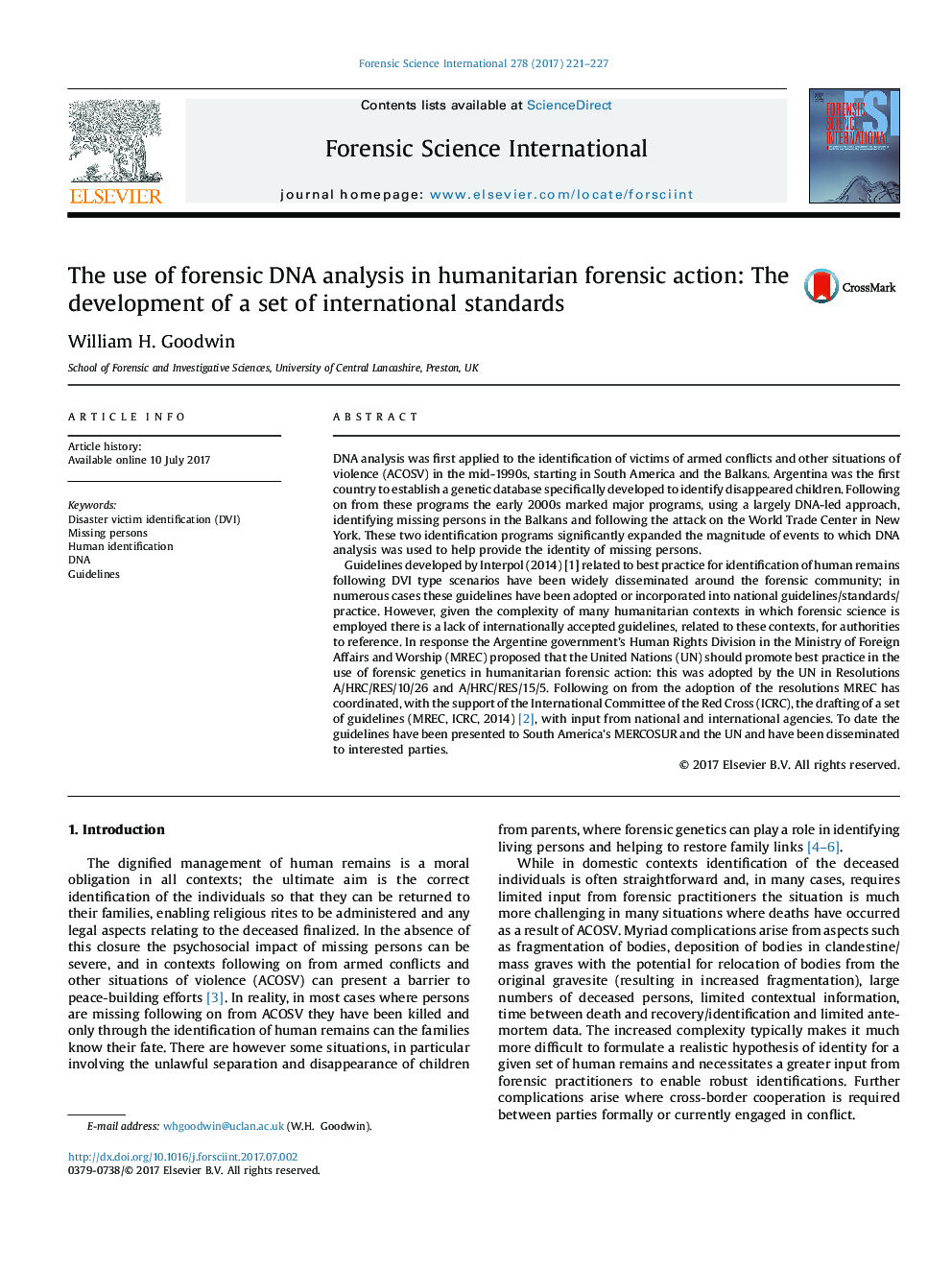| کد مقاله | کد نشریه | سال انتشار | مقاله انگلیسی | نسخه تمام متن |
|---|---|---|---|---|
| 6462312 | 1421972 | 2017 | 7 صفحه PDF | دانلود رایگان |
- Guidance on ethical, legal and technical aspects of humanitarian forensic action.
- The guidelines draw on over 30 years' experience of States and agencies.
- Technical aspects of human remains identification reviewed.
DNA analysis was first applied to the identification of victims of armed conflicts and other situations of violence (ACOSV) in the mid-1990s, starting in South America and the Balkans. Argentina was the first country to establish a genetic database specifically developed to identify disappeared children. Following on from these programs the early 2000s marked major programs, using a largely DNA-led approach, identifying missing persons in the Balkans and following the attack on the World Trade Center in New York. These two identification programs significantly expanded the magnitude of events to which DNA analysis was used to help provide the identity of missing persons.Guidelines developed by Interpol (2014) [1] related to best practice for identification of human remains following DVI type scenarios have been widely disseminated around the forensic community; in numerous cases these guidelines have been adopted or incorporated into national guidelines/standards/practice. However, given the complexity of many humanitarian contexts in which forensic science is employed there is a lack of internationally accepted guidelines, related to these contexts, for authorities to reference. In response the Argentine government's Human Rights Division in the Ministry of Foreign Affairs and Worship (MREC) proposed that the United Nations (UN) should promote best practice in the use of forensic genetics in humanitarian forensic action: this was adopted by the UN in Resolutions A/HRC/RES/10/26 and A/HRC/RES/15/5. Following on from the adoption of the resolutions MREC has coordinated, with the support of the International Committee of the Red Cross (ICRC), the drafting of a set of guidelines (MREC, ICRC, 2014) [2], with input from national and international agencies. To date the guidelines have been presented to South America's MERCOSUR and the UN and have been disseminated to interested parties.
Journal: Forensic Science International - Volume 278, September 2017, Pages 221-227
